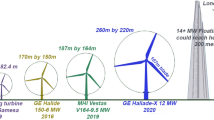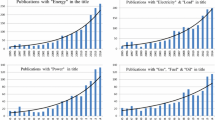Abstract
In this paper, central elements of the Solar Shield project, launched to design and establish an experimental system capable of forecasting the space weather effects on high-voltage power transmission system, are described. It will be shown how Sun–Earth system data and models hosted at the Community Coordinated Modeling Center (CCMC) are used to generate two-level magnetohydrodynamics-based forecasts providing 1–2 day and 30–60 min lead-times. The Electric Power Research Institute (EPRI) represents the end-user, the power transmission industry, in the project. EPRI integrates the forecast products to an online display tool providing information about space weather conditions to the member power utilities. EPRI also evaluates the economic impacts of severe storms on power transmission systems. The economic analysis will quantify the economic value of the generated forecasting system. The first version of the two-level forecasting system is currently running in real-time at CCMC. An initial analysis of the system’s capabilities has been completed, and further analysis is being carried out to optimize the performance of the system. Although the initial results are encouraging, definite conclusions about system’s performance can be given only after more extensive analysis, and implementation of an automatic evaluation process using forecasted and observed geomagnetically induced currents from different nodes of the North American power transmission system. The final output of the Solar Shield will be a recommendation for an optimal forecasting system that may be transitioned into space weather operations.





Similar content being viewed by others
References
Arge CN, Luhmann JG, Odstrcil D, Schrijver CJ, Li Y (2004) Stream structure and coronal sources of the solar wind during the May 12th, 1997 CME. J Atmos Sol Terr Phys 66:1295–1309
Barlow WH (1849) On the spontaneous electrical currents observed in the wires of the electric telegraph, philosophical transactions of the Royal Society of London, Vol 139, pp 61–72
Barnes PR, Van Dyke JW (1990) Economic consequences of geomagnetic storms, IEEE Power Engineering Review (a summary)
Bolduc L (2002) GIC observations and studies in the Hydro-Québec power system. J Atmos Sol Terr Phys 64(16):1793–1802
Boteler DH, Pirjola RJ, Nevanlinna H (1998) The effects of geomagnetic disturbances on electrical systems at the earth’s surface. Adv Space Res 22:17
Czech P, Chano S, Huynh H, Dutil A (1992) The Hydro-Québec system blackout of 13 March 1989: system response to geomagnetic disturbance, EPRI report, TR-100450. In: Proceedings of geomagnetically induced currents conference, Millbrae, California, USA, November 8–10, 1989
Erinmez AI, Kappenman JG, Radasky WA (2002) Management of the geomagnetically induced current risks on the national grid company’s electric power transmission system. J Atmos Sol Terr Phys 64:743–756
Gaunt CT, Coetzee G (2007) Transformer failures in regions incorrectly considered to have low GIC-risk. In: Proceedings of power tech, July 1–5 2007, Lausanne, Switzerland
Kappenman J (2004) The evolving vulnerability of electric power grids, Space Weather, 2(1). doi: 10.1029/2003SW000028
Kappenman J (2005) Too important to fail. Space Weather 3(5):S05001. doi:10.1029/2005SW000152
Kappenman JG, Albertson VD (1990) Bracing for geomagnetic storms, IEEE Spectrum, March 27 1990
Lanzerotti LJ (2008) Economic impacts of space weather. Space Weather 6:S01002. doi:10.1029/2007SW000385
Lesher RL, Porter JW, Byerly RT (1994) SUNBURST—a network of GIC monitoring systems. IEEE Trans Power Deliv 9(1):128–137
Liu C-M, Liu L-G, Pirjola R, Wang Z-Z (2009) Calculation of geomagnetically induced currents in mid to low latitude power grids based on the plane wave method: a preliminary case study. Space Weather 7:S04005. doi:10.1029/2008SW000439
Lopez RE, Hernandez S, Wiltberger M, Huang C-L, Kepko EL, Spence H, Goodrich CC, Lyon JG (2007) Predicting magnetopause crossings at geosynchronous orbit during the Halloween storms. Space Weather 5:S01005. doi:10.1029/2006SW000222
Lundstedt H (2006) The sun, space weather and GIC effects in Sweden. Adv Space Res 37:1182–1191
Molinski T (2002) Why utilities respect geomagnetically induced currents, J. Atmos Sol Terr Phys 64:1765
National Research Council (2008) Severe space weather events–understanding societal and economic impacts: a workshop report. The National Academies Press, Washington
Odstrcil D, Pizzo VJ (1999) Distortion of the interplanetary magnetic field by three-dimensional propagation of coronal mass ejections in a structured solar wind. J Geophys Res 104(A12):28225–28240. doi:10.1029/1999JA900319
Odstrcil D, Pizzo VJ, Arge CN (2005) Propagation of the 12 May 1997 interplanetary coronal mass ejection in evolving solar wind structures. J Geophys Res 110:A02106. doi:10.1029/2004JA010745
Pirjola R (2007) Space weather effects on power grids. In: Bothmer V, Daglis I (eds) Space weather—physics and effects. Springer, Berlin
Powell KG, Roe PL, Linde TJ, Gombosi TI, De Zeeuw DL (1999) A solution-adaptive upwind scheme for ideal magnetohydrodynamics. J Comput Phys 154(2):284. doi:10.1006/jcph.1999.6299
Pulkkinen A (2007) Spatiotemporal characteristics of the ground electromagnetic field fluctuations in the auroral region and implications on the predictability of geomagnetically induced currents, in Space Weather, Research towards Applications in Europe, vol 12, 344th edn. Springer, Berlin, p 332
Pulkkinen A, Lindahl S, Viljanen A, Pirjola R (2005) Geomagnetic storm of 29–31 October 2003: Geomagnetically induced currents and their relation to problems in the Swedish high-voltage power transmission system. Space Weather 3:S08C03. doi:10.1029/2004SW000123
Pulkkinen A, Hesse M, Kuznetsova M, Rastätter L (2007a) First-principles modeling of geomagnetically induced electromagnetic fields and currents from upstream solar wind to the surface of the Earth. Ann Geophys 25:881–893
Pulkkinen A, Pirjola R, Viljanen A (2007b) Determination of ground conductivity and system parameters for optimal modeling of geomagnetically induced current flow in technological systems, Earth. Planets Space 99:999–1006
Pulkkinen A, Pirjola R, Viljanen A (2008) Statistics of extreme geomagnetically induced current events. Space Weather 6:S07001. doi:10.1029/2008SW000388
Pulkkinen A, Taktakishvili A, Odstrcil D, Jacobs W (2009) Novel approach to geomagnetically induced current forecasts based on remote solar observations, Space Weather (in press). doi:10.1029/2008SW000447
Skoug RM, Gosling JT, Steinberg JT, McComas DJ, Smith CW, Ness NF, Hu Q, Burlaga LF (2004) Extremely high speed solar wind: 29–30 October 2003. J Geophys Res 109:A09102. doi:10.1029/2004JA010494
Taktakishvili A, Kuznetsova M, MacNeice P, Hesse M, Rastätter L, Pulkkinen A, Chulaki A, Odstrcil D (2009) Validation of the coronal mass ejection predictions at the Earth orbit estimated by ENLIL heliosphere cone model. Space Weather 7:S03004. doi:10.1029/2008SW000448
Trivedi NB et al (2007) Geomagnetically induced currents in an electric power transmission system at low latitudes in Brazil: a case study. Space Weather 5:S04004. doi:10.1029/2006SW000282
Weigel RS, Detman T, Rigler EJ, Baker DN (2006) Decision theory and the analysis of rare event space weather forecasts. Space Weather 4:S05002. doi:10.1029/2005SW000157
Wintoft P (2005) Study of solar wind coupling to the time difference horizontal geomagnetic field. Ann Geophys 23:1949–1957
Xie H, Ofman L, Lawrence G (2004) Cone model for halo CMEs: application to space weather forecasting. J Geophys Res 109:A03109. doi:10.1029/2003JA010226
Acknowledgments
Numerous entities have contributed, directly or indirectly, to the work described in this paper. First and foremost the authors are grateful to all model developers who provided their models for the community use at CCMC. Obviously, without these contributions the presented GIC forecasting work would not have been possible. The authors also acknowledge Drs. Masha Kuznetsova, Lutz Rastätter, Sandro Taktakishvili, Peter MacNeice and Ms. Anna Chulaki for their help with the MHD simulations. AP would like to thank Drs. Risto Pirjola and Ari Viljanen for fruitful collaboration on GIC and general geomagnetic induction that enabled the coupling between MHD and GIC established in this work.
Author information
Authors and Affiliations
Corresponding author
Rights and permissions
About this article
Cite this article
Pulkkinen, A., Hesse, M., Habib, S. et al. Solar shield: forecasting and mitigating space weather effects on high-voltage power transmission systems. Nat Hazards 53, 333–345 (2010). https://doi.org/10.1007/s11069-009-9432-x
Received:
Accepted:
Published:
Issue Date:
DOI: https://doi.org/10.1007/s11069-009-9432-x




